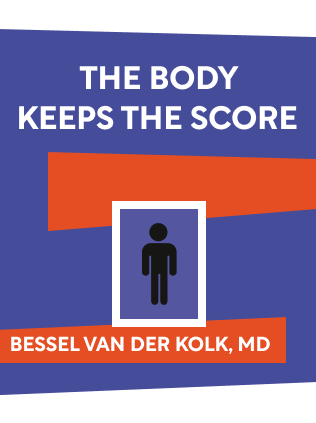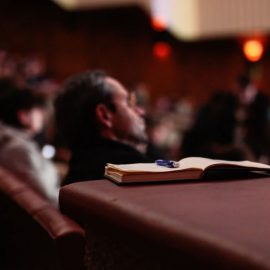

This article is an excerpt from the Shortform book guide to "The Body Keeps The Score" by Bessel van der Kolk. Shortform has the world's best summaries and analyses of books you should be reading.
Like this article? Sign up for a free trial here .
What is the polyvagal theory? How does it work and what does it have to do with how we handle trauma?
Stephen Porges’ Polyvagal theory explains why we have emotional reactions in response to certain stimuli, like sounds. Some researchers believe that understanding polyvagal theory can help us manage trauma.
Read more about polyvagal theory and how it works.
Your Body Expresses Your Thoughts and Emotions
Your mental and physical states are inextricably connected. Both positive and negative emotions can give you physical sensations—like when the hair on the back of your neck stands up in the face of a threat, or you feel butterflies in your stomach when you’re excited.
Other people pick up on your mental and emotional state through your facial expressions and body language, and likewise, you read other people’s emotions and intentions through their physical expressions. Darwin went so far as to say that the purpose of emotions is to spur physical actions that will keep or return us to a safe and balanced state.
However, if your mind and emotions are hijacked by a hypervigilance to danger — as is the case with trauma sufferers — it prevents you from relaxing enough to connect with other people; they don’t read an open, welcoming state in your posture, and you mistakenly see them as threatening.
The Polyvagal Theory: Why Body Language Influences Emotions
Researcher Stephen Porges came up with the Polyvagal Theory in 1994. Stephen Porges’ Polyvagal Theory explains how our social interactions with others, and the way we read each others’ body language, impacts our emotions — for instance, why hearing a soothing voice can calm you, or why feeling ostracized by other people can make you angry or cause you to shut down. This theory reinforces the important role that social relationships play in your life and emotional well-being.
Your mirror neurons (located in the frontal lobes, which help you pick up on other people’s actions, emotions, and intentions and are responsible for empathy) interpret people’s emotions through their body language, and then your body adjusts in response; if you pick up calm vibes from someone else, you’ll unconsciously relax. This helps humans live and function in communities.
Trauma Survivors Struggle to Find Safety and Belonging in Communities
Reciprocity — feeling seen and heard by the people around you — and social support foster a feeling of safety that is the most important factor in mental health. You must feel safe in order to let your guard down enough to play, have intimate relationships, mate, and nurture children.
Many trauma survivors struggle to feel truly understood, seen, and heard by those around them, and thus seldom feel safe and comfortable in social settings. Some trauma sufferers find a community in fellow trauma survivors (as we mentioned earlier, in the cases of veterans and first responders), but confining yourself to a community of fellow victims ultimately leads to further isolation.
Healing from trauma means restoring the ability to feel safe and experience reciprocity. Animals — particularly dogs and horses — are used in group treatment of trauma survivors because they offer companionship and safety without the complexities that human relationships bring, as a part of Stephen Porges’ polyvagal theory.

———End of Preview———
Like what you just read? Read the rest of the world's best book summary and analysis of Bessel van der Kolk's "The Body Keeps The Score" at Shortform .
Here's what you'll find in our full The Body Keeps The Score summary :
- How your past trauma might change your brain and body
- What you can do to help your brain and body heal
- Why some trauma survivors can't recognize themselves in the mirror






